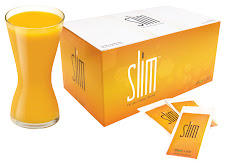Most people know that high cholesterol levels, contribute to heart disease. But many don't realize that a high cholesterol level also contributes to stroke risk.
What is Cholesterol?
Cholesterol, a waxy substance produced by the liver, is a vital body product. It contributes to the production of hormones and vitamin D and is an integral component of cell membranes.
The liver makes enough cholesterol to fuel the body's needs, and this natural production of cholesterol alone, is not a large contributing factor to atherosclerosis, heart disease, and stroke.
Research has shown that the highest danger from cholesterol, comes from a dietary intake of foods that contain high levels of cholesterol. Foods high in saturated fat and cholesterol can increase the amount of total cholesterol in the body to alarming levels, contributing to the risk of atherosclerosis and thickening of the arteries—which can lead to stroke.
Cholesterol is a Lipid
Cholesterol is classified as a lipid, meaning that it is fat-soluble rather than water-soluble. Other lipids include fatty acids, glycerides, alcohol, waxes, steroids, and fat-soluble vitamins A, D, and E. Lipids and water, like oil and water, do not mix. Blood is a water-based liquid, therefore cholesterol does not mix with blood. In order to travel through the blood without clumping together, cholesterol needs to be covered by a layer of protein. The cholesterol and protein together are called a lipoprotein.
The Good and the Bad Cholesterol: Two Types of Lipoprotein
There are two kinds of cholesterol, commonly called the "good" and the "bad." Good cholesterol is high-density lipoprotein, or HDL; bad cholesterol is low-density lipoprotein, or LDL. Together, these two forms of cholesterol, make up a person's total serum cholesterol level.
Most Cholesterol in the Body is in the Form of LDL
LDLs circulate through the bloodstream, picking up excess cholesterol and depositing cholesterol where it is needed. But when too much cholesterol starts circulating in the blood, the body cannot handle the excessive LDLs, which build up along the inside of the arterial walls.
The buildup of LDL coating on the inside of the artery walls, hardens and turns into arterial plaque, leading to stenosis (narrowing of the artery) and atherosclerosis. This plaque blocks blood vessels and contributes to the formation of blood clots.
The Good Guys
The other form of cholesterol, HDL, is beneficial and contributes to stroke prevention. HDL carries a small percentage of the cholesterol in the blood, but instead of depositing its cholesterol on the inside of artery walls, HDL returns to the liver to unload its cholesterol. The liver then eliminates the excess cholesterol by passing it along to the kidneys.
A Person May Lower the Risk for Atherosclerosis and Stroke by increasing the good HDL and lowering the bad LDL Cholesterol Levels.
Bioslife is the safest, most effective way to naturally improve cholesterol levels
Saturday, May 5, 2007
How Cholesterol Levels Contribute to Stroke Risk
Subscribe to:
Post Comments (Atom)



No comments:
Post a Comment